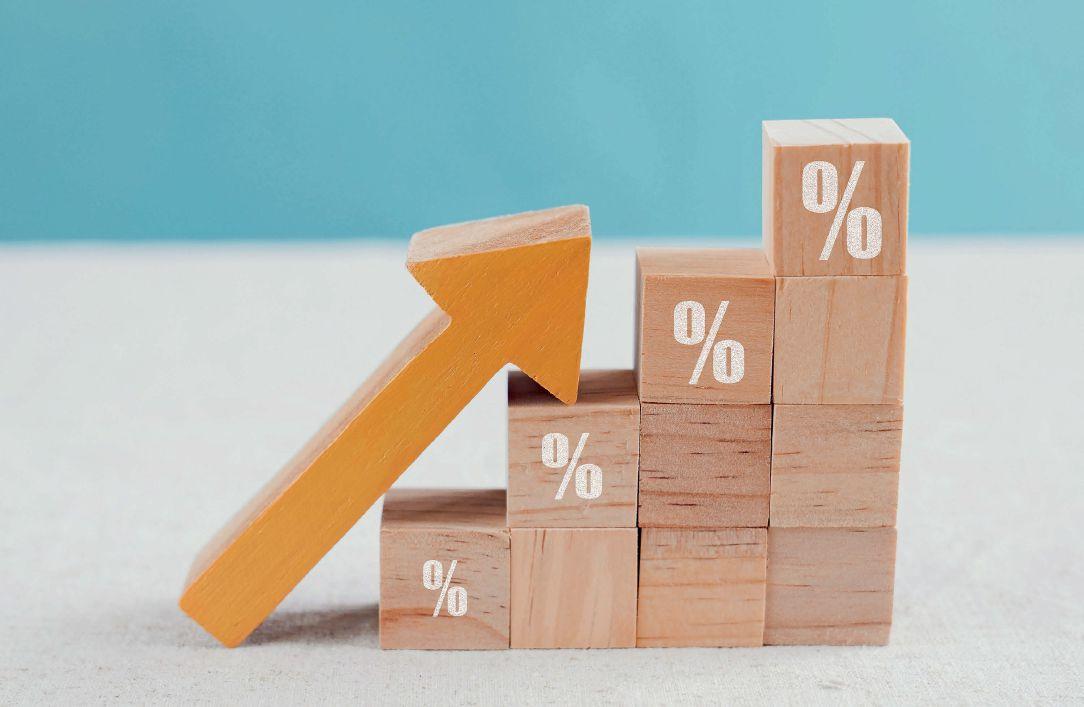
2 minute read
Rising Rates
By Andrew Weeks
Chris Wolf views the financial world through a particular lens. He readily admits he is not an economist, but sees trends in the industry from his view of working with clients in the region.
Wolf is northern valley market president of Alerus. If there is a phrase to describe what he sees in the region it is that the region is economically strong. That’s a good situation to be in, especially with the anticipation of rising interest rates.
As of this reporting, he said “interest rates are still at low levels.” But what happens as they rise?
The region will still be in a good place – as long as rates don’t rise too quickly.
“That would result in an increase in costs to businesses and individuals, which, if that were to happen too fast, would result in slowed or decreased economic activity,” Wolf said.
“The economy in this region has been strong. When an economy is strong, you would, with increased inflation, expect interest rates to rise. The economy can handle a certain amount of that and still be strong. The balance is they don’t want to increase rates so quickly that it cools off the economy.”
The good news is that rates typically rise at a slow pace.
Sunil Swami, chief investment officer at Alerus, said there are other costs of higher interest rates, such as the increased cost of financing, which can result in compressed valuations of stocks and real estate. “However,” he said, “when rates rise because of economic growth it implies that the economy is strong enough to accommodate higher interest rates, which is positive.”
The geopolitical climate, including Russia’s invasion of Ukraine, can have an impact on decision-making regarding interest rates here at home.
“For example, higher oil prices can increase inflation, which might push the Fed to increase rates more than they would otherwise,” Swami said, and that as of late February, the market expects about six rate hikes of about 0.25% each in 2022.
Debbie Albert, a financial advisor at TrueStone Wealth Management in Grand Forks, said she expects rates to rise.
“We feel interest rates are probably on the rise,” she said in early March. “We have seen interest rates very low for so long, it’s almost time for them to normalize. And that’s good and bad.”
On the positive side, she said it is good for those who are saving their pennies, those who generally use interest-bearing accounts –savings, money market accounts, certificates of deposit – because they have seen such a loss in their returns by diffusing those types of investments.
“So that’ll be a plus for that area of the market,” Albert said.
It also is good for retirees and older individuals who use their investments for retirement income, which particularly have been hit with low interest rates.
As an example, she said, if someone had $100,000 at 4.5%, it generated $4,500. When it drops a point, that’s a hundred bucks.
“They feel that,” she said. “That’s real money to that sector of the market.”
With increased rates, they get that money back.
Albert said as rates rise, there could be an impact on mortgages, as homeowners may see an increase in their monthly payment.
“Those individuals that have taken adjustable rate mortgages out in the past may see a surprise as they see the mortgage interest rate increasing due to the rate slow down. It could slow down because it now becomes more expensive,” she said. “The sector of the market that carries your higher mortgage balances are typically your firsttime homebuyers. They have higher mortgage balances – those in their late 20s and early 30s just starting out with their home. That’s the area that’s probably going to get affected most. On the other hand, those sitting on the fence looking at market rates and wanting to buy a house, this might get them in the market quicker.”
Donovan Schumacher, mortgage banker and Red River Valley sales manager at Alerus, said the federal government was purchasing mortgage-backed securities and reinvesting its dividends back into the market in the second quarter of 2020, which drove interest rates down and kept them low.








